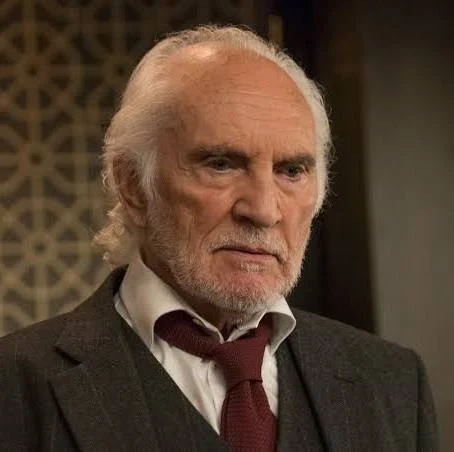Terrence Stamp’s passing at 87 marks the end of an era defined by elegance, enigma, and a screen presence that transcended mere performance to become legend. Born in Stepney, East London, in 1938, the son of a tugboat stoker, he weathered the trials of World War II before finding his path from the humbleness of advertising to the fierce spotlight of acting. His early scholarship to the Webber Douglas Academy signaled the transformation of a working-class boy into one of his generation’s most compelling artists.
From his debut in 1962’s Billy Budd, Stamp revealed himself as an actor of depth, earning an Academy Award nomination for the title role. He carried that momentum into The Collector, a performance that earned him the Best Actor prize at Cannes and cemented his reputation as a brooding, magnetic force. He ruled the swinging ‘60s with roles in Far from the Madding Crowd and Pasolini’s Teorema, embodying both beauty and complex vulnerability. His on-screen relationships with Julie Christie and model Jean Shrimpton made him emblematic of the era’s cultural and aesthetic shift, immortalized in photography and song.
His metamorphosis into a figure of myth occurred with a simple, whispered line in Superman—“Kneel before Zod”—a chilling delivery that turned Stamp into one of cinema’s most memorable villains. Though antagonistic, there was an elegance to his menace that remains unmatched. That role carried naturally into Superman II, rooting him in pop culture lore even as he pursued more introspective roles in films like The Limey and The Adventures of Priscilla, Queen of the Desert, where his portrayal of Bernadette was touching, theatrical, and deeply human.
Stamp’s filmography is a demonstration of fearless eclecticism. He worked with auteurs like Fellini and Loach, stepped into Hollywood blockbusters (Star Wars: Episode I, Wall Street), and brought gravitas to films like Valkyrie and Last Night in Soho. Behind the roles was the actor who could sit silently and command the frame with a gaze, who blended classically refined technique with a rebellious, ever-present charisma.
Beyond his roles, Stamp was a creator in his own right—publishing memoirs, a novel, and even a cookbook. The words he chose were as intentional as the silences he carried on screen. He wrote with humor, curiosity, and an unvarnished look at a life lived in the public eye and under the influence of fame.
His personal life mirrored his artistic one: complex, deeply felt, and often unconventional. Married once in his sixties to Elizabeth Os’Rourke, 35 years his junior, their union was brief, yet it reflected his openness to life’s late acts of connection. Always elegant, always a bit distant, he remained enigmatic until the end.
In an age that often demands loud impact, Stamp was quieter, deeper—a study in the power of understatement. As he aged, the fire in his eyes never dimmed. His final performances, including those in television and voice work, carried the same weight as his earliest ones.
Terrence Stamp’s legacy lies not only in the characters he inhabited but in the aura he brought to every frame: danger and grace, irony and longing. He vanished today from the physical realm, but his cinematic presence remains unwavering, a testament to a lifetime spent elevating every line, every glance. He was not just an actor—he was an unforgettable force who shaped how we understand screen presence itself.




